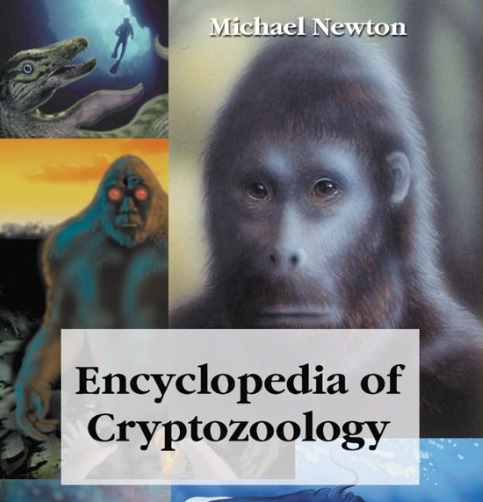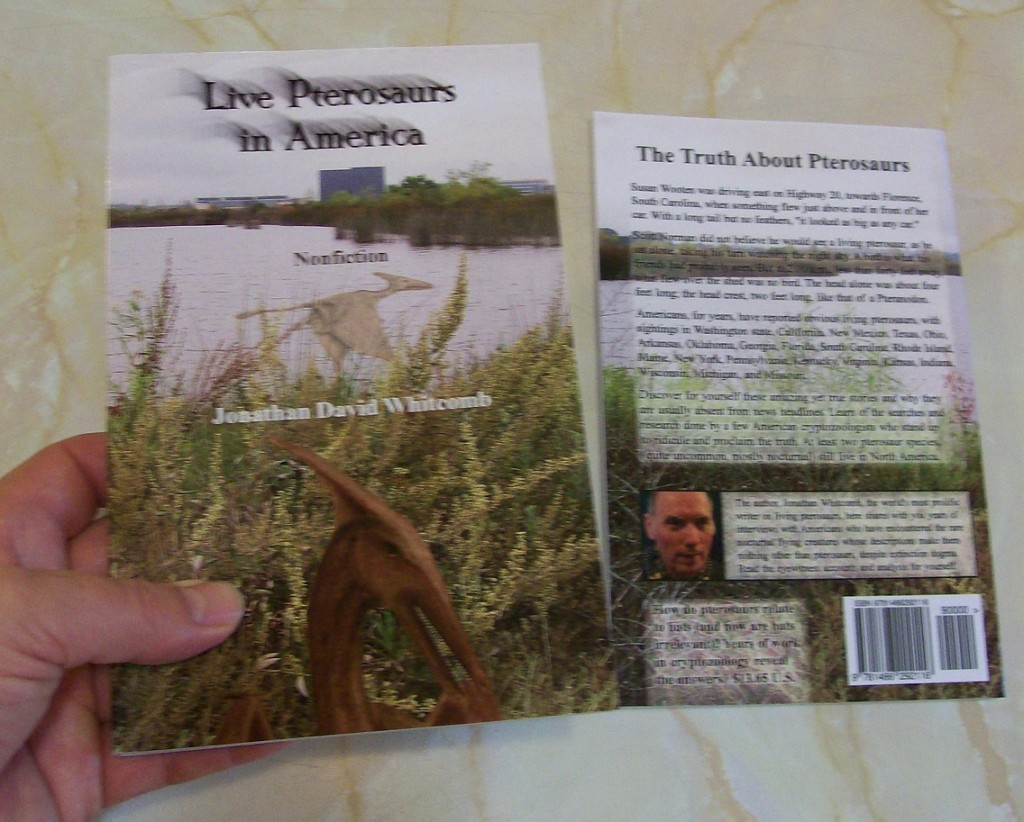Another paleontologist has stepped outside his field of expertise and railed against my writings about modern pterosaurs: Donald Prothero, who specializes in mammalian paleontology, according to Wikipedia. His November 24, 2014, post is titled “Fake Pterosaurs and Sock Puppets” on skeptic.com. I avoid linking to libelous pages, and this one includes “Whitcomb admitted the deception in July, 2014” and links to one of my posts. Strange to tell, but that post of mine explains why I was NOT being dishonest in using pen names. Here’s the link: Jonathan Whitcomb pen names. It gives me some hope that Prothero was making an honest mistake, when he included that link; nevertheless, his post appears sure to lead his readers astray from the truth, not only about my motivations but about investigations of living-pterosaur sighting reports in general. I must respond.
I’ll not say much about the sock puppet accusations here; I’ve written much on it already. For those who go to that link in question, it may become obvious that I was not trying to deceive anybody concerning reports of modern living pterosaurs, including the flying creature called ropen; for those who read only that post by Prothero, however, it can seem like I’ve tried to deceive people about the ropen and that I did so almost single-handedly. Let us look deeper.
Do “virtually all” writings about the ropen come from just one person: Jonathan Whitcomb?
My blog posts and web pages outnumber those of anyone else on the subject of modern “pterodactyls” or primitive flying creatures that have been assumed to have been long extinct; that need not suggest that I have been dishonest. Skeptics include at least three of the best-known paleontologists in the world; that need not suggest my investigation over the past eleven years has been in vain. Look at some details.
Notice, if you read that post by Dr. Prothero, the absence of the following words:
- Umboi
- expedition
- exploration
- eyewitness
Now notice the absence of the following names of explorers, on his post:
- Paul Nation
- Garth Guessman
- David Woetzel
- Jacob Kepas
- James Blume
“Whitcomb” is found twelve times on his post. If only it were saying only nice things about people. Oh well, I’m getting used to it.
What does Donald Prothero think I have been writing about for eleven years? Most of my web page publications have been in blog-post format, and those posts number well over a thousand. Yet to anyone who wants to look deeper, it will become obvious why Google has not penalized my pages about eyewitness accounts of these flying creatures: My posts are not spam-repetition of previously published pages. Their quoting of other pages is limited, as is this post by Prothero (“Fake Pterosaurs and Sock Puppets”).
A paleontologist has stepped outside his area of expertise in yet another way, declaring that my online writings are a “classic case” of “sock puppetry” online. Nonsense! The majority of my posts have been under my name of Jonathan Whitcomb (or Jon Whitcomb), NOT any pen name. And by the way, for a spammer to use many alias would hardly hide repetitive content from detection by a search engine system like Google. It seems Prothero is again outside his field of knowledge, making another assumption without any deep investigation beforehand. (I’ll leave sock puppetry for another post, but I used two pen names because I was falsely accused of dishonesty, NOT to be dishonest. Readers really needed to be enlightened by eyewitness reports, without being distracted by my name.)
Expeditions in Papua New Guinea
I was surprised at the way Prothero referred to the Destination Truth and Monsterquest episodes that related to the ropen of Papua New Guinea. He declares that those two television show episodes were “based on the obsessions of one individual.” Really?! I was consulted by the pre-production researchers of both Destination Truth and Monsterquest before their expeditions in the southwest Pacific, it is true. But many persons have been involved in interviews in Papua New Guinea, before my own 2004 expedition in that remote area of the planet.
Again Mr. Prothero appears to have stepped outside his area of expertise. I would not have expected him to deeply investigate how those two production teams decided to include the ropen in their shows, yet one paleontologist has taken a big leap of faith, and a blind leap apparently, in assuming that I, Jonathan Whitcomb, as a lone individual, inspired those television producers to pay for teams to be sent to Papua New Guinea. Some of my web pages may have caught their attention but the power of persuasion was in the eyewitness testimonies.
Other paleontologists, including Darren Naish, have at least dipped their toes into the ocean of eyewitness sighting reports, before rejecting everything that chilled them. Dr. Prothero seems to pretend that the ocean does not even exist, at least in this post “Fake Pterosaurs and Sock Puppets.” Dr. Prothero, burying ones head in a fossil bed in the middle of North America does not make the Pacific Ocean disappear.
Eyewitnesses are the point
For those who read his post about me, I would ask, “Where do I get new material for writing countless web pages about apparent living pterosaurs?” I promise I do not just repeat myself endlessly. I continue to get emails from eyewitnesses of flying creatures that appear to have been living pterosaurs. I now have reports from eyewitnesses from four continents and from islands in the Pacific. No need for much repetition. I write about new sighting reports and compare them to older accounts.
Now please notice the following names of eyewitnesses, persons from various places and with various backgrounds and religious beliefs. Each of these names is found in the fourth edition of my nonfiction book Searching for Ropens and Finding God. Not all of them believe in modern pterosaurs, but most of them do, having seen them. (Some of these persons witnessed a flying light at night, rather than the form of an apparent pterosaur.)
- Blume, James
- Bunnel, James
- Carson, Patty
- Cheesman, Evelyn
- Conrad, Venice
- Cooper, Sherry
- Cottingham, Steven
- Eunice of Umboi Island
- Fabian of Salamaua
- Gates, Joshua
- Gima, William
- Grotty, Rob
- Guessman, Garth
- Hennessy, Brian
- Hodgkinson, Duane
- Jonah Jim
- Kau, Mark
- Kepas, Jacob
- Koro, Gideon
- Koro, Wesley
- Kuhn, Eskin
- Laura in Arkansas
- Leonard of Opai
- Marcy, Milt
- Meixner, Kevin
- Moke, David
- Nation, Paul
- Nolo, Dickson
- Norman, Scott
- Paina, Luke
- Paradise, Sandra
- Quiroz, Lydia
- Ragu, Jonathan
- Rhodriquez, Devin
- Schroder, David
- Stew (in Mexico)
- Watters, Professor Steven
- Woetzel, David
- Wooten, Susan
- Zacharia of Owongai Village
The above is not a complete listing, in my book, of all the eyewitnesses of possible pterosaurs, but it should suffice.
Why not listen to the eyewitnesses? They are the point of all these investigations in cryptozoology, including the work of my associates, Paul Nation, Cliff Paiva, Garth Guessman, David Woetzel, Jacob Kepas, and others. I testify that I have not been alone in this work, and the eyewitnesses deserve to be heard.
.
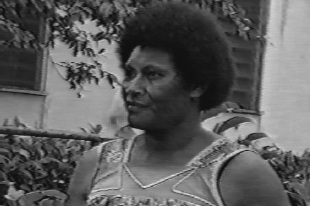 Eunice, an eyewitness on Umboi Island, Papua New Guinea
Eunice, an eyewitness on Umboi Island, Papua New Guinea
.
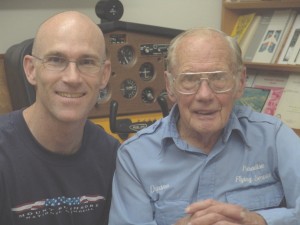 Garth Guessman and Duane Hodgkinson, both eyewitnesses of one or more living pterosaurs
Garth Guessman and Duane Hodgkinson, both eyewitnesses of one or more living pterosaurs
.
David Woetzel, another cryptozoologist-eyewitness of living pterosaurs
.
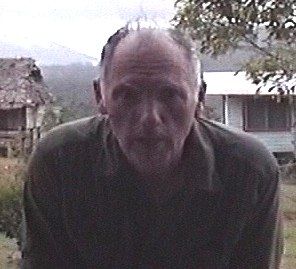 Jonathan Whitcomb, nonfiction writer and author who believes many of the eyewitnesses
Jonathan Whitcomb, nonfiction writer and author who believes many of the eyewitnesses
.
###
.
Is there no new evidence for modern pterosaurs?
Ricky Kearns and family members witnessed a large flying creature at night, and it had wings that were glowing. This was in Point Pleasant, although Ricky mentioned to me that what he saw did not look like what the Mothman is reported to look like. Nevertheless, there may be a relationship with some sightings of what has been labeled “Mothman.”
Modern pterosaurs, AKA “flying dinosaurs”
Look up “pterosaur” in a dictionary and one of the first words you’ll see is “extinct.” Many Americans call them “pterodactyls” or “flying dinosaurs.” Few Americans have admitted believing that those “prehistoric” flying creatures could still be living, few indeed, until recently.
So who do you call? I hope you’ll contact me, Jonathan Whitcomb. As far as I know, I am the only person on earth who has devoted anything like a full-time effort, over years, to interview eyewitnesses of apparent living pterosaurs or ropens, promoting the idea that these flying creatures are not extinct but very much alive.
Live Pterosaur Media – press releases
A physicist [Clifford Paiva], who examined video footage of two strange lights that explorers think are bioluminescent pterosaurs, declares that the glow is not from meteors, lanterns, campfires or an airplane.
.
A quest for discovering modern pterosaurs
.



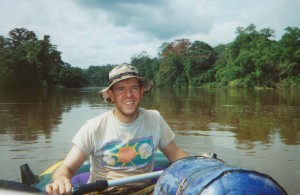
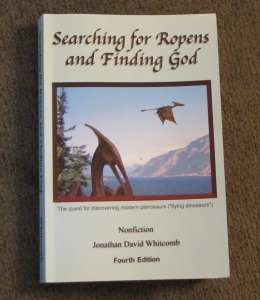
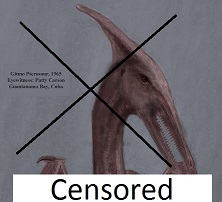
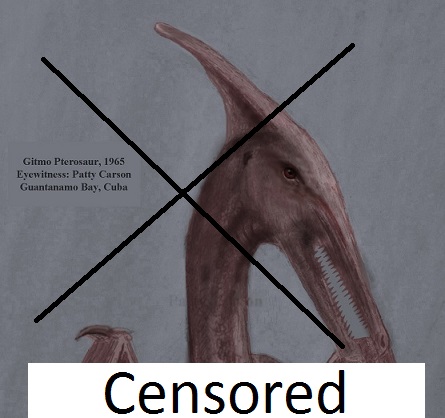 The “Ropen” page was censored through deletion on Wikipedia
The “Ropen” page was censored through deletion on Wikipedia